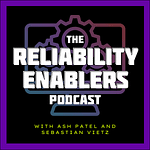Alert noise is no joke and neither is the fatigue that results from it. I spoke with Dan Ravenstone who gave a talk at Monitorama about this very topic.
He also happens to be an avid skateboarder!
Here are 9 takeaways from our conversation:
Regularly Review and Update Monitoring Systems: Don’t set up monitoring once and forget about it. Continuously assess and update your monitoring systems to ensure they remain relevant and effective.
Focus on Relevant Alerts: Ensure your alerting system is tailored to indicate real problems. Avoid relying on outdated criteria such as high CPU or memory usage unless they directly impact user experience.
Adopt a User-Centric Approach: Develop alerts based on how issues affect the user experience rather than purely technical metrics. This helps prioritize what truly matters to the end user.
Evaluate Alert Value: Critically assess each alert for its value. Ask whether the alert provides actionable information and if it impacts the user or business. Eliminate or adjust alerts that don’t meet these criteria.
Reduce Alert Noise: Strive to minimize unnecessary alerts contributing to noise and obscure real issues. This makes it easier to detect and respond to genuine problems.
Understand the User Journey: Document the user journey and create Service Level Objectives (SLOs) to align alerts with user-impacting events. This ensures alerts are meaningful and actionable.
Secure Leadership Support: Gain buy-in from leadership by demonstrating the long-term benefits of an effective alerting system. Emphasize how it can improve user satisfaction and operational efficiency.
Improve Documentation and Preparedness: Ensure thorough documentation for all systems and alerts. This reduces stress and increases efficiency, particularly for engineers handling on-call duties.
Automate Alert Responses: Implement automation to handle routine alerts. This reduces the manual burden on engineers and allows them to focus on more complex issues.









